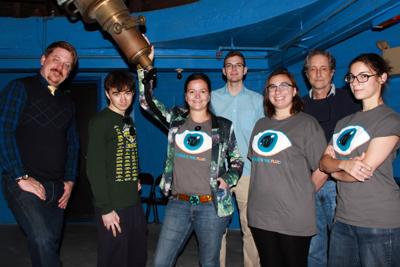When astronomers noticed a strange light pattern coming from a distant star, many speculated this was evidence of an advanced alien civilization.
The discovery of not only life, but intelligent life outside of Earth would have far reaching implications for not only science, but society as a whole.
LSU Department of Physics & Astronomy assistant professor Tabetha Boyajian recently disproved a theory that the dimming of Tabby’s Star—named after Boyajian—was caused by an alien megastructure.
When scientists analyzed the light patterns coming from the star, known as KIC 8462852, many were hopeful that the sporadic dimming and brightening of the star was the sign of an advanced alien civilization. Much to the dismay of many scientists and astronomers, this was not the case.
Boyajian created a Kickstarter campaign in May 2016 to fund a private telescope array to continue observing the star after the Kepler Space Telescope stopped doing so. Boyajian said the Kickstarter aimed to secure time with the Las Cumbres Observatory in Goleta, California.
To Boyajian’s surprise, the Kickstarter raised more than $100,000 from over 1,700 backers. It was particularly surprising because there was no precedent for this type of Kickstarter campaign.
“I attribute it to luck,” Boyajian said. “This is kind of the first one of its kind to do something like that. This was a way for people who had a couple extra bucks to contribute to science, which we thought was really cool.”
Using the money from Kickstarter, Boyajian and her team were able to observe the star from March 2016 through December 2017. During this time, the star’s light dimmed four times. Backers of the Kickstarter campaign named these events — Elsie, Celeste, Brae and Angkor.
The names for Skara Brae and Angkor come from two lost cities. Boyajian said these names are fitting, as the star is more than 1,000 light years away. Therefore, the events witnessed happened more than 1,000 years ago.
However, while observing the star, Boyajian and her team realized the dimming could not have been caused by the alien megastructure once theorized.
“If you have a planet crossing in front of a star, it will block out a little bit of its light, and it will do that periodically,” Boyajian said. “The biggest planet out there is a Jupiter-sized planet. If Jupiter crosses in front of a star, it will make at most a 1 percent drop in the star’s light.”
These two concepts proved that a planet was not causing the dimming.
“What we see for this star is not regularly occurring drops in brightness,” Boyajian said. “We see very large drops, up to 22 percent. The object, whatever it was, was very, very massive.
The megastructure theory fell apart when Boyajian and her team noticed that blue light was being dimmed a lot more than red light during the dimming instances. Boyajian said an opaque object, such as a planet or alien megastructure, blocks all wavelengths of light equally. Dust, however, is better at blocking blue light than it is at red light.


